An electric fillet knife is a handy tool for fishermen...
Read More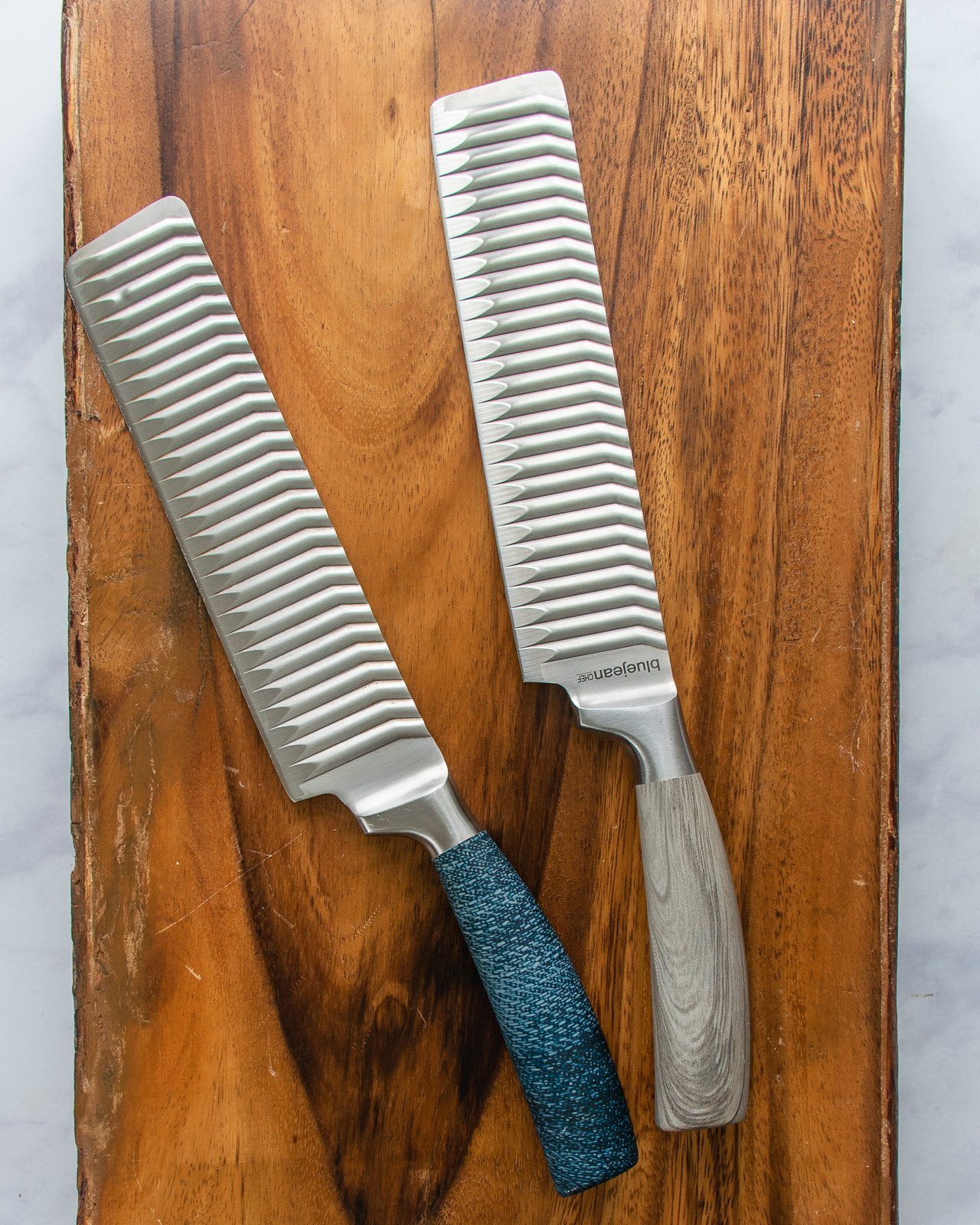
A Nakiri knife is a type of Japanese kitchen knife that is commonly used for chopping vegetables. The word “Nakiri” translates to “vegetable cutter,” which reflects the knife’s primary use. This knife is similar in shape to a cleaver, with a rectangular blade that has a straight edge and a flat profile.
Unlike a cleaver, however, the Nakiri knife is typically lighter and thinner, making it easier to handle and maneuver while cutting through vegetables. The blade of a Nakiri knife is also sharpened on both sides, which makes it versatile for use by both right-handed and left-handed individuals. The Nakiri knife is an essential tool for any home or professional chef who wants to efficiently and precisely cut through vegetables.
What is a Nakiri knife used for?
A Nakiri knife is primarily used for chopping and slicing vegetables, making it a popular tool in Japanese cuisine where vegetable preparation is a key part of many dishes. The straight edge and flat profile of the blade make it easy to slice through vegetables with a clean, straight cut.
The knife’s rectangular shape also allows for a wider surface area, making it easier to chop vegetables in one motion without having to rock the blade back and forth. The sharp, double-beveled edge of the Nakiri knife allows for precise cuts, which is especially important when working with delicate vegetables like herbs or thin slices of produce.
In addition to vegetables, some chefs also use Nakiri knives for cutting fruits or herbs. The Nakiri knife is an essential tool for any home or professional chef who wants to efficiently and precisely cut through vegetables with ease.
What can I cut with a Nakiri knife?
A Nakiri knife is designed primarily for chopping and slicing vegetables, but it can also be used for other tasks like cutting fruit, herbs, and even some types of meat. With its flat blade and straight cutting edge, a Nakiri knife is particularly well-suited for precision vegetable preparation, such as creating fine julienne cuts, thinly slicing vegetables like cucumbers or onions, and cutting through dense or hard vegetables like squash and root vegetables.
The shape of the Nakiri knife’s blade also makes it ideal for chopping and dicing vegetables, as the flat profile allows for efficient and accurate cuts with minimal rocking motion. It is particularly useful for tasks like cutting leafy greens, chopping herbs, and preparing stir-fry ingredients.
While a Nakiri knife is not typically used for heavier tasks like breaking down large cuts of meat or cutting through bone, it is an excellent tool for any home cook or chef who wants to efficiently and precisely cut through vegetables with ease.
What is the best size of Nakiri knife?
The best size of a Nakiri knife depends on personal preference and the tasks you plan to use it for. Typically, Nakiri knives range in blade length from around 6 inches to 7 inches, although longer blades can be found. A smaller blade size of 6 inches may be easier to control and maneuver for those with smaller hands or when working with smaller vegetables, while a longer blade may be better for larger produce or for those with more experience.
Ultimately, it comes down to finding the right balance of size and weight that feels comfortable and suits your needs. It’s important to choose a size that feels comfortable to hold and control while also being able to handle the size of the vegetables you commonly work with.
What are the advantages of a Nakiri knife?
There are several advantages of using a Nakiri knife, including:
- Efficient and precise vegetable cutting: The straight blade and flat profile of the Nakiri knife make it easy to cut through vegetables with a clean, straight cut, allowing for more efficient and precise vegetable preparation.
- Versatility: Although primarily used for cutting vegetables, the sharp, double-beveled edge of the Nakiri knife can also be used for other tasks such as slicing fruit or herbs.
- Comfortable to use: The rectangular shape and lightweight design of the Nakiri knife make it comfortable to hold and use for extended periods of time.
- Reduced risk of injury: The flat profile of the blade reduces the risk of injury, as there is less risk of the blade slipping and cutting the user.
- Easier to sharpen: The straight blade of the Nakiri knife makes it easier to sharpen compared to knives with curved blades.
- Aesthetic appeal: Nakiri knives are often beautifully crafted and can add a touch of elegance and style to any kitchen.
Overall, the Nakiri knife is a versatile and efficient tool for any chef or home cook who wants to efficiently and precisely cut through vegetables with ease.
What is the difference between Santoku and Nakiri?
The main difference between a Santoku and a Nakiri knife is the shape of the blade and the tasks they are designed to perform. A Santoku knife is a general-purpose knife that can be used for a variety of tasks, including slicing, dicing, and chopping meat, fish, and vegetables. It has a wider blade with a curved tip that allows for a rocking motion when cutting. The Santoku knife is also thinner and lighter than a Nakiri knife, which allows for greater precision when making delicate cuts.
On the other hand, a Nakiri knife is primarily designed for chopping vegetables. It has a rectangular blade with a flat profile, which makes it easier to cut through vegetables with a straight, downward motion. The Nakiri knife’s flat profile also allows for greater control when cutting thin slices of vegetables. It is also generally thicker and heavier than a Santoku knife, which makes it ideal for cutting through denser vegetables like squash or root vegetables.
In summary, while both knives are designed for different purposes, they share some similarities, such as a double-beveled edge and a lightweight design. If you’re looking for a versatile knife that can handle a variety of tasks, a Santoku knife may be the better choice. But if you mainly plan to use your knife for vegetable preparation, a Nakiri knife may be the way to go.
How to use Nakiri knife safely
Using a Nakiri knife safely involves following some basic guidelines to prevent injury and ensure the longevity of the knife. Here are some tips for using a Nakiri knife safely:
- Hold the knife properly: Place your index finger and thumb on either side of the blade’s base, while the remaining fingers wrap around the handle. Make sure to grip the knife firmly, but avoid applying too much pressure as this can cause the blade to slip.
- Use a cutting board: Always use a cutting board when using a Nakiri knife, and make sure it is stable and secure to prevent it from moving around. Avoid cutting on surfaces like marble or glass, as these can damage the blade.
- Keep fingers and hands clear: Keep your fingers and other hand clear of the blade when cutting to prevent accidental cuts. Use a claw grip with your free hand to hold the food securely while cutting.
- Cut with a downward motion: Use a downward motion when cutting with a Nakiri knife, as this is the most efficient and safe way to cut through vegetables. Avoid using a back-and-forth motion, which can cause the blade to slip and increase the risk of injury.
- Store the knife safely: When not in use, store the Nakiri knife in a knife block, sheath, or on a magnetic strip to protect the blade and prevent accidents.
By following these guidelines, you can use a Nakiri knife safely and effectively to prepare vegetables and other ingredients.
Factors to consider when choosing the best Nakiri knife
When choosing the best Nakiri knife, there are several factors to consider to ensure you get a high-quality knife that meets your needs. Here are some of the most important factors to consider:
- Blade Material: The blade material is one of the most important factors to consider when choosing a Nakiri knife. High-quality Japanese stainless steel or carbon steel are typically preferred due to their durability, sharpness, and ability to hold an edge.
- Blade Size: Nakiri knives typically range in blade length from 5 to 7 inches. Choose a blade size that is comfortable for you to handle and can easily cut through the vegetables you plan to use it for.
- Blade Shape: Consider the shape of the blade when choosing a Nakiri knife. Some blades are flat, while others have a slight curve towards the tip. Choose a shape that matches your cutting style and preference.
- Handle Material: The handle material is important for comfort and grip. Common materials include wood, plastic, and metal. Choose a material that is comfortable and provides a secure grip.
- Blade Thickness: The thickness of the blade affects its weight and ability to cut through vegetables. A thinner blade is lighter and easier to handle, while a thicker blade can cut through denser vegetables with ease.
- Price: Nakiri knives can range in price from under $50 to over $200. Consider your budget and choose a knife that provides the best quality for your needs.
By considering these factors, you can choose the best Nakiri knife for your needs and preferences, ensuring a high-quality knife that will last for years to come.
How to clean Nakiri knife
Cleaning a Nakiri knife is important to ensure that it remains hygienic, rust-free, and to prolong its lifespan. Here are the steps to properly clean a Nakiri knife:
- Rinse the knife: Rinse the Nakiri knife with warm water immediately after use. This helps to remove any food debris or dirt that may be stuck on the blade.
- Wash the knife: Use a mild dishwashing soap and a sponge or soft cloth to clean the blade and handle. Avoid using abrasive cleaners or harsh scrubbers, as they can damage the knife’s surface.
- Dry the knife: Wipe the knife with a clean towel or cloth to remove any excess water. Make sure to dry the blade and handle thoroughly, as moisture can cause rust and damage to the knife over time.
- Store the knife safely: Once the knife is dry, store it in a knife block, magnetic strip, or sheath. Avoid storing the knife in a drawer or with other utensils, as this can damage the blade’s edge.
Tips:
- Do not soak the knife in water, as this can damage the handle and cause rust on the blade.
- Do not use a dishwasher to clean the knife, as the high temperature and harsh detergents can damage the blade and handle.
- Always handle the knife with care, as the blade is sharp and can cause injury.
By following these steps, you can properly clean a Nakiri knife and keep it in top condition for long-lasting use.
Can you sharpen a Nakiri knife?
Yes, a Nakiri knife can be sharpened just like any other knife. In fact, it is important to regularly sharpen a Nakiri knife to maintain its sharpness and cutting ability.
To sharpen a Nakiri knife, you can use a sharpening stone, honing rod, or an electric sharpener. If using a sharpening stone, start with a coarse grit to remove any nicks or dull spots, and then move to a finer grit for honing and polishing the blade. Hold the blade at a consistent angle, usually around 15 to 20 degrees, and make sure to sharpen both sides of the blade evenly.
It’s important to use the correct sharpening technique for a Nakiri knife, as it has a straight blade with a beveled edge. Make sure to sharpen the entire beveled edge from the heel to the tip of the blade, maintaining a consistent angle throughout.
Remember to clean and dry your knife after sharpening, and always store it safely to protect the blade.
How to maintain Nakiri knife properly
Proper maintenance of a Nakiri knife is essential to keep it in top condition and prolong its lifespan. Here are some tips to maintain a Nakiri knife properly:
- Sharpen regularly: A dull blade is not only ineffective, but it can also be dangerous. Use a sharpening stone or honing rod to keep the blade sharp. Sharpening once every few months should suffice, but this may vary depending on the frequency of use.
- Store properly: When not in use, store the Nakiri knife in a safe place to avoid damage. You can use a knife block, magnetic strip, or sheath to protect the blade.
- Clean after each use: Clean the Nakiri knife thoroughly after each use, as this helps to prevent rust and corrosion. Use warm water, mild dishwashing soap, and a soft sponge or cloth to clean the blade and handle.
- Dry thoroughly: After cleaning the knife, make sure to dry it thoroughly with a clean towel or cloth. Avoid leaving the blade wet, as moisture can cause rust and corrosion.
- Oil the blade: Use food-grade oil to protect the blade from rust and corrosion. Apply a small amount of oil on the blade and wipe it with a cloth to evenly distribute it.
- Handle with care: Always handle the Nakiri knife with care, as the blade is sharp and can cause injury. Avoid using the knife on hard surfaces, such as bone or frozen food, as this can damage the blade.
By following these tips, you can maintain a Nakiri knife properly and ensure its longevity. Proper maintenance also helps to keep the blade sharp, ensuring efficient and safe use.
Troubleshooting about Nakiri knife
Nakiri knives are generally durable and easy to use, but they may encounter some issues from time to time. Here are some common problems with Nakiri knives and how to troubleshoot them:
- Dull blade: If your Nakiri knife is not cutting as smoothly as it used to, it may be time to sharpen the blade. Use a sharpening stone or honing steel to sharpen the blade to its original sharpness.
- Uneven edge: If one side of the blade is sharper than the other, the blade may need to be adjusted. Use a honing guide to maintain a consistent angle when sharpening the blade.
- Rust or discoloration: If your Nakiri knife has rust or discoloration on the blade, it may be due to exposure to moisture or acidic foods. To remove rust, use a rust eraser or a mixture of baking soda and water. To prevent future rust, dry the blade thoroughly after each use and store it in a dry place.
- Loose handle: If the handle of your Nakiri knife feels loose or wobbly, it may need to be tightened. Check the screws on the handle and tighten them if necessary.
- Chipped blade: If the blade of your Nakiri knife has chips or nicks, it may need to be repaired or replaced. Take it to a professional knife sharpener or contact the manufacturer for repair or replacement options.
By following these troubleshooting tips, you can keep your Nakiri knife in top condition for years to come.
Nakiri knife - FAQs
What is a Nakiri knife used for?
A Nakiri knife is a Japanese-style vegetable knife that is used for chopping, slicing, and dicing vegetables. It has a thin, straight blade that makes it ideal for precision cutting.
How is a Nakiri knife different from a Chef’s knife?
A Nakiri knife has a thinner, straighter blade than a Chef’s knife, which makes it ideal for slicing and chopping vegetables. A Chef’s knife has a wider, curved blade that is better suited for tasks like chopping meat and larger items.
Can you sharpen a Nakiri knife?
Yes, you can sharpen a Nakiri knife using a sharpening stone or honing steel. It’s important to maintain a consistent angle when sharpening to ensure that the blade stays sharp.
How do you care for a Nakiri knife?
To care for a Nakiri knife, it’s important to keep it clean and dry after each use. Avoid soaking it in water or putting it in the dishwasher. Use a honing steel or sharpening stone to maintain the blade’s sharpness, and store it in a knife block or sheath to protect the blade.
What size Nakiri knife should I get?
The size of a Nakiri knife depends on your personal preference and the size of the vegetables you typically cut. A 6-7 inch blade is a good choice for most home cooks, while a larger blade may be more suitable for professional chefs or those who frequently prepare large quantities of vegetables.
Is a Nakiri knife worth it?
Whether or not a Nakiri knife is worth it depends on your individual needs and preferences in the kitchen. Here are some factors to consider when deciding if a Nakiri knife is worth the investment:
- Vegetable-centric cooking: If you do a lot of vegetable prep work in the kitchen, a Nakiri knife can be a valuable addition to your knife collection. Its straight blade and thin profile make it ideal for chopping, slicing, and dicing vegetables.
- Precision cutting: The Nakiri knife’s flat blade and straight edge make it easy to achieve precise cuts and clean, even slices. If precision cutting is important to you, a Nakiri knife can be a useful tool.
- Comfort: The Nakiri knife’s flat blade and lightweight design make it comfortable to use for extended periods of time. If you suffer from hand or wrist fatigue when using other types of knives, a Nakiri knife may be a good option for you.
- Price: Nakiri knives can range in price from budget-friendly options to high-end, premium models. If you are on a tight budget, you may need to weigh the benefits of a Nakiri knife against the cost.
Overall, a Nakiri knife can be a useful and valuable tool in the kitchen, particularly if you frequently prepare vegetables. However, it may not be necessary for all types of cooking or for all individuals. Ultimately, whether or not a Nakiri knife is worth it for you depends on your personal preferences and cooking habits.
Related Posts
How to choose the best electric fillet knife for crappie
An electric fillet knife for crappie is a specialized tool...
Read MoreShould you buy cordless electric carving knife?
A cordless electric carving knife is a kitchen tool designed...
Read MoreWhy Trust Us
You will find what you are looking for at Jody's Bakery. From classic to luxury brands, you'll find both. We will help you to select appliances that fit your needs, budget and lifestyle. Whether you want to stop by to learn more — or plan to make a major purchase — we’ll treat you like family and assist you every step of the way. Shop with us today to receive friendly and experienced help along the way.











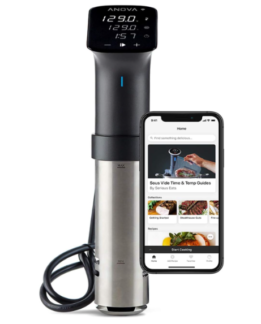
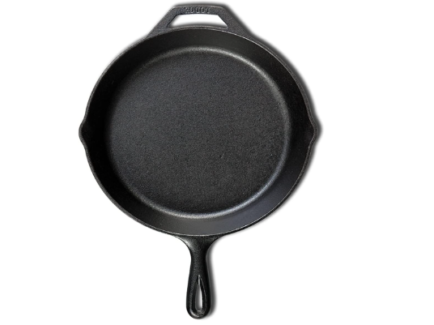
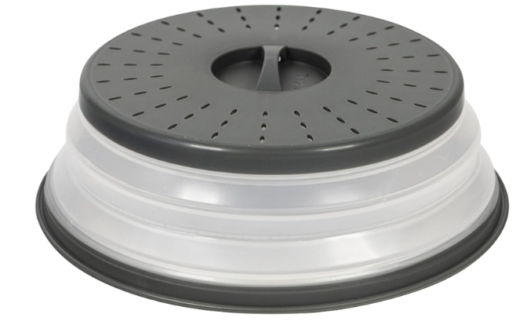
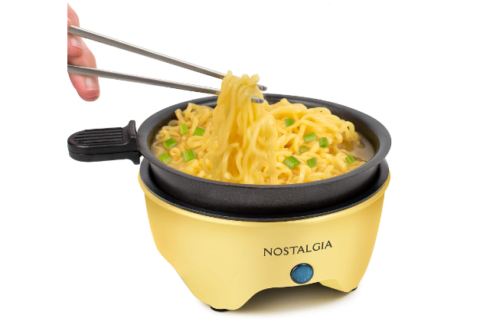
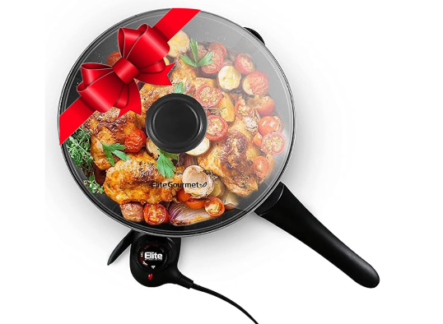
… [Trackback]
[…] Info on that Topic: jodysbakery.com/what-is-a-nakiri-knife-used-for/ […]
… [Trackback]
[…] Read More to that Topic: jodysbakery.com/what-is-a-nakiri-knife-used-for/ […]
… [Trackback]
[…] Read More Info here to that Topic: jodysbakery.com/what-is-a-nakiri-knife-used-for/ […]
… [Trackback]
[…] Info to that Topic: jodysbakery.com/what-is-a-nakiri-knife-used-for/ […]
… [Trackback]
[…] Find More on on that Topic: jodysbakery.com/what-is-a-nakiri-knife-used-for/ […]
… [Trackback]
[…] Find More to that Topic: jodysbakery.com/what-is-a-nakiri-knife-used-for/ […]
… [Trackback]
[…] Read More on on that Topic: jodysbakery.com/what-is-a-nakiri-knife-used-for/ […]
… [Trackback]
[…] Information to that Topic: jodysbakery.com/what-is-a-nakiri-knife-used-for/ […]
… [Trackback]
[…] Read More on that Topic: jodysbakery.com/what-is-a-nakiri-knife-used-for/ […]